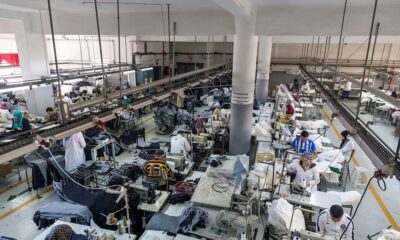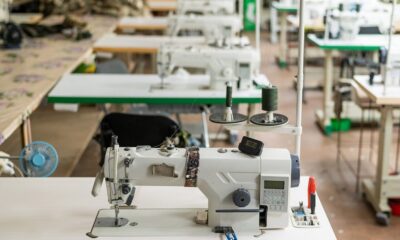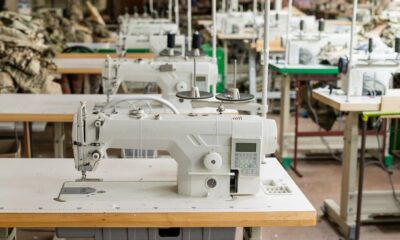Fashion
Major challenges ahead of Bangladesh’s LDC graduation: ICCB editorial

Upon graduation, Bangladesh will gradually lose the duty-free and quota-free market access it currently enjoys in major destinations like the European Union, Canada and Australia.
Though Bangladesh has met all three essential UN criteria for graduation from the LDC status, maintaining economic momentum and competitiveness after that needs significant internal restructuring, the ICCB has said.
An editorial in its latest newsletter said unless productivity improves and the country diversifies into new markets and higher-value apparel categories, the RMG industry’s edge may weaken.
For the readymade garment (RMG) industry—which accounts for over 80 per cent of export earnings—tariffs of 10-12 per cent could sharply reduce competitiveness, an editorial in the July-September 2025 issue of ICCB News Bulletin said.
Unless productivity improves and the country diversifies into new markets and higher-value apparel categories, its edge may weaken, it noted.
“Graduation will end concessional loans and grants, forcing Bangladesh to rely on costly commercial borrowing. With over $100 billion in external debt, rising global interest rates could strain repayment capacity. Stronger debt management, higher reserves, and export diversification are crucial to maintain fiscal discipline and ensure long-term macroeconomic stability,” said the editorial.
Global trade trends compound this challenge. Rising protectionism, complex supply-chain standards and non-tariff barriers such as carbon border taxes and due-diligence laws threaten traditional export models. As the global apparel market increasingly prioritises sustainability, traceability and labour compliance, Bangladesh must reposition itself as a responsible and innovative manufacturing hub, suggests the editorial.
At the same time, weaknesses in education, healthcare, and social protection must be addressed to ensure inclusive growth. A post-LDC Bangladesh cannot afford to leave its human capital behind. Skill development, vocational training, and greater female participation in the workforce will determine how equitably prosperity is shared.
Graduation also presents an opportunity to diversify beyond garments into IT, pharmaceuticals, leather agro-processing, service sector and shipbuilding—sectors critical for long-term competitiveness, it observed.
The privileges of the past will fade and the discipline of the future will demand more reform, more innovation and greater resilience, the editorial added.
Fibre2Fashion News Desk (DS)
Fashion
AI to take centre stage at Global Sourcing Expo 2025 seminar

As part of the Expo’s Global Sourcing Seminar Program, the session ‘Growth, e-commerce and AI in Fashion’ on Tuesday, November 18 at 3 pm will bring together leading voices from across the fashion and lifestyle sectors to explore how technology and creativity are combining to drive smarter, more sustainable business growth.
AI’s transformative role in fashion will take centre stage at the Global Sourcing Expo’s seminar, ‘Growth, e-commerce and AI in Fashion,’ on November 18.
Led by Elizabeth Formosa with panellists Kelly Slessor and Christina Exie, the session explores how AI drives smarter, more sustainable growth, enhances creativity, and empowers brands—big or small—to innovate responsibly and reduce waste.
Led by Elizabeth Formosa, Founder of Fashion Equipped, the discussion features Kelly Slessor (Founder, The Ecommerce Tribe & Tribe Gen AI) and Christina Exie (Co-Founder, Stacked Studio), who together will share practical strategies and real-world examples that reflect the industry’s rapid digital evolution.
AI in Fashion: From Hype to Real-World Impact
Formosa says the conversation around AI in fashion has moved beyond the buzzwords:
“AI is changing how our entire industry operates, from design and sourcing to marketing and customer experience. Brands are no longer asking if they should use AI, but how to use it effectively and responsibly. It’s not just about technology; it’s about transformation and staying relevant in a rapidly evolving market.”
According to Formosa, AI is now integral to how fashion businesses grow and connect with their audiences.
“AI helps brands understand their customers on a much deeper level. It allows them to personalise experiences, predict demand, and make smarter, faster decisions. From optimising assortments to improving marketing spend, it’s about using data to support creativity, not replace it.”
Empowering Every Brand to Innovate
For smaller or emerging brands, Formosa believes that embracing AI doesn’t need to be overwhelming.
“Start simple and strategic. Identify one area where AI can make a real difference — whether that’s analysing sales data, creating content, or improving your customer experience — and start there. Keep it aligned to your goals and values, learn as you go, and build confidence through small wins.”
She also emphasises the importance of education and community:
“Attending events like the Global Sourcing Expo is a great way to gain practical insights and knowledge from leaders on the front line of our industry.”
Technology as a Tool for Creativity and Sustainability
Formosa describes this as an “incredible time to be in fashion,” with AI helping the industry work smarter and make more responsible choices.
“AI gives brands the clarity to make better decisions and the freedom to innovate with purpose. It’s helping reduce waste through smarter forecasting, improved inventory management, and better product development. By predicting demand more accurately, we can minimise overproduction — one of fashion’s biggest sustainability challenges.”
Actionable Insights for a Fast-Moving Market
The Global Sourcing Seminar Program is designed to complement the Expo’s vibrant show floor, offering attendees expert-led education sessions that turn ideas into action.
Elizabeth Formosa’s session promises to deliver practical, actionable takeaways across sourcing, brand development, digital strategy, and AI adoption.
“This session will empower attendees to take immediate action,” says Formosa. “You’ll leave with the clarity, confidence, and tools to grow and strengthen your business in today’s fast-moving market.”
Attendees are also encouraged to download Fashion Equipped’s free guide, Navigating the Global Sourcing Expo, which includes tips and checklists to help businesses prepare, engage with manufacturers effectively, and maximise results from their Expo experience.
Note: The headline, insights, and image of this press release may have been refined by the Fibre2Fashion staff; the rest of the content remains unchanged.
Fibre2Fashion News Desk (SG)
Fashion
ITMA ASIA + CITME 2025 returns to Singapore after 20 years
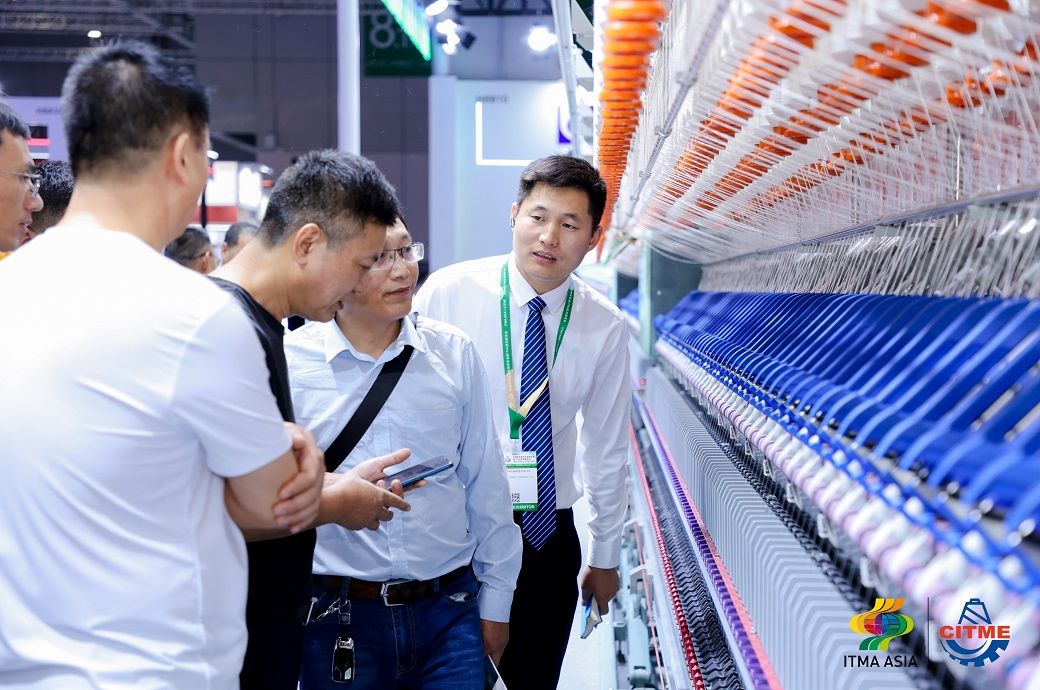
The four-day exhibition has attracted the participation of major textile machinery brands from around the world. Over 840 exhibitors from 30 countries and regions are showcasing their latest technologies and solutions to trade visitors from Asia’s leading textile and garment manufacturing hubs.
ITMA ASIA + CITME 2025 opens at Singapore Expo, marking its return after 20 years.
The four-day show features 840 exhibitors from 30 countries across 19 sectors, showcasing innovations in sustainability, digitalisation, and productivity.
Highlight sectors include finishing, spinning, and knitting, with a Sustainability Forum on October 30.
Occupying over 70,000 square metres of gross space, the exhibition features 19 product sectors, covering the entire textile and garment manufacturing value chain. Spotlighting solutions that advance sustainability, digitalisation and productivity, exhibits range from spinning, weaving and knitting to garment making, textile processing to automation, recycling and other products and services.
Owned by CEMATEX (the European Committee of Textile Machinery Manufacturers), ITMA ASIA returns to Singapore after 20 years. It was first held at the Singapore Expo in 2001 and repeated in 2005.
Combined with CITME, a textile machinery exhibition owned by the China Textile Machinery Association (CTMA) and The Sub-Council of Textile Industry, CCPIT TEX since 2008, the combined exhibition is staged outside of China for the first time.
“This Singapore edition marks a new milestone for ITMA ASIA + CITME. By bringing the latest machinery and digital solutions closer to growth markets across South and Southeast Asia and the Middle East, our aim is to offer a trusted platform for mill owners to source cutting-edge technologies that support operational modernisation and long-term competitiveness, particularly in advancing sustainability,” said Mr Alex Zucchi, President of CEMATEX.
Mr Gu Ping, President of CTMA added, “Amid a new wave of digital revolution, the global textile and textile machinery sectors now stand at the forefront of strategic transformation. As a premier platform on textile machinery, the exhibition not only showcases end-to-end solutions but acts as a bridge for efficient business collaboration across the supply chain.”
For regional textile machinery buyers in the region, ITMA ASIA + CITME, Singapore 2025 provides a strategic platform to source for cost-effective technologies that boost operational performance while ensuring compliance with sustainability standards and regulations.
Exhibiting countries
CEMATEX countries and China, both of which have robust textile machinery sectors, have strong presence on the show floor. Their exhibitors take up almost 70% of the exhibit space.
A total of 281 exhibitors from the nine CEMATEX countries booked over 38% of the net exhibit space. From among CEMATEX countries, Italy fields the largest contingent of 98 exhibitors, followed by Germany and Switzerland.
Chinese exhibitors totalling 310 book 30% of the exhibit space. From the rest of the world, India tops the list with 87 exhibitors.
Top product sectors
Of the 19 product sectors, finishing is the largest sector with 184 exhibitors; it occupies 22% of the exhibit space. The second biggest sector is spinning (167 exhibitors with 19% of exhibit space).
Other prominent sectors are knitting (99 exhibitors, 15% of exhibit space), weaving (80 exhibitors, 11% of exhibit space) and printing (56 exhibitors, 10% of exhibit space).
According to the show owners, many of the exhibits will spotlight solutions in circularity, resource efficiency, waterless processing, and renewable energy integration as the goal is to help Asian manufacturers move beyond volume-driven growth to embrace sustainable, impact-driven competitiveness.
ITMA ASIA + CITME, Singapore 2025 is organised by ITMA Services and co-organised by Beijing Textile Machinery International Exhibition Company.
Held alongside the exhibition is the ITMA Sustainability Forum: Accelerating the Green Transition. Taking place on 30 October, it is a half-day forum presented by CEMATEX with Singapore Fashion Council as the Programme Partner.
Note: The headline, insights, and image of this press release may have been refined by the Fibre2Fashion staff; the rest of the content remains unchanged.
Fibre2Fashion News Desk (HU)
Fashion
VF Corp revenue totals $2.8 billion in Q2 FY26, net debt drops 21%
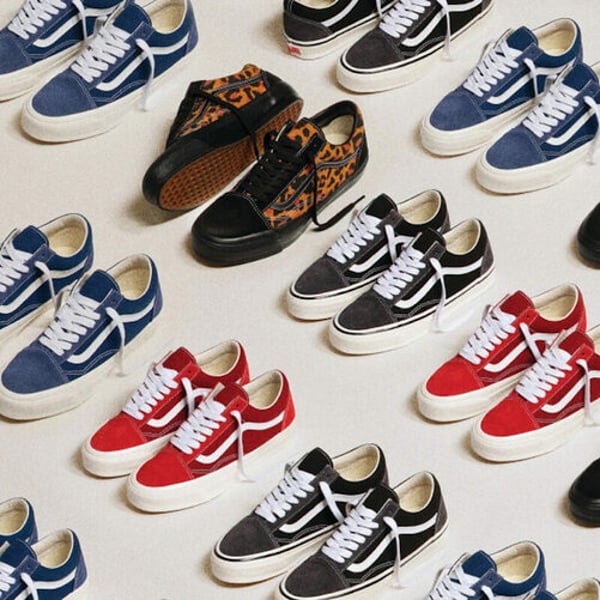
Published
October 28, 2025
VF Corporation’s revenue reached $2.8 billion in the second quarter of the 2026 financial year, rising 2% year on year. The Vans, Timberland, The North Face, and Dickies owner also reduced its net debt by 21% compared to the same period last year, it announced on October 28.
Vans reported a 9% loss in the second quarter, down from 11% a year prior. Timberland and The North Face reported 7% and 6% growth respectively. The results exceeded prior guidance and reflect better-than-expected back-to-school results and early wholesale demand, according to VF Corp.
“In Q2 we made further progress on our turnaround plan,” said the business’ president and CEO Bracken Darrell in a release posted on VF Corp’s website. “We delivered broad-based growth for The North Face® and Timberland®, while continuing to moderate declines in Vans®. We also announced the pending sale of Dickies® for $600 million, enhancing our capacity to invest in the portfolio and drive shareholder returns. Looking ahead, we will continue to focus on generating value across our brands and returning the company to sustainable and profitable growth.”
VF Corp’s adjusted operating income totalled $330 million and its operating income was at $313 million in the second quarter. The business reported an operating margin of 11.2%, up by +130 bps compared to the second quarter of the 2025 fiscal year, with a gross margin of 52.2%.
VF Corp expects to report adjusted operating income of over $275 million in the third quarter of the 2026 financial year. The business foresees both its adjusted operating income and its operating cash flow increasing year on year for the whole 2026 fiscal year.
Along with announcing its results for the quarter ending September 27, the business’ Board of Directors authorised a quarterly per share dividend of $0.09, payable on December 18, 2025, to shareholders of record at the close of business on December 10, 2025. VF Corp’s shares were up about 4% in premarket trading, Reuters reported. Based in Denver, Colorado, the business’ results come in contrast to a backdrop of increasing US retail pressure, fuelled by US-imposed global tariffs.
Copyright © 2025 FashionNetwork.com All rights reserved.
-

 Fashion1 week ago
Fashion1 week agoChinese woman charged over gold theft at Paris Natural History Museum
-

 Tech7 days ago
Tech7 days agoThis Smart Warming Mug Is Marked Down by $60
-

 Fashion1 week ago
Fashion1 week agoeBay UK seller fee removal sends revenue down but profits rise
-

 Entertainment1 week ago
Entertainment1 week agoJohn Grisham unveils his first-ever mystery, “The Widow”
-

 Tech1 week ago
Tech1 week agoEaster Island’s Moai Statues May Have Walked to Where They Now Stand
-

 Tech1 week ago
Tech1 week agoOpenAI has slipped shopping into ChatGPT users’ chats—here’s why that matters
-
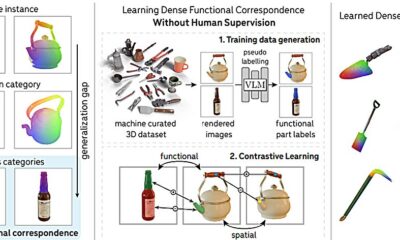
 Tech1 week ago
Tech1 week agoAI model could boost robot intelligence via object recognition
-

 Fashion1 week ago
Fashion1 week agoNew EU strategy proposed to shape global clean, resilient transition


